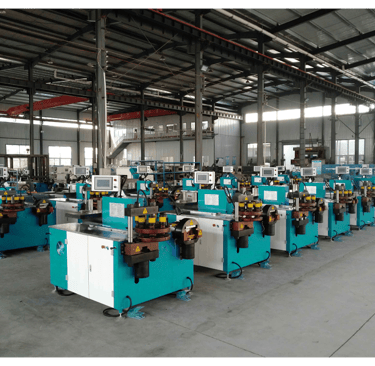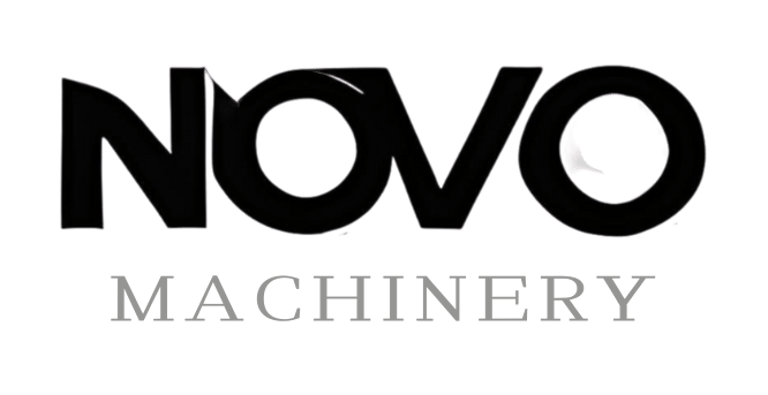A Guide to Transforming Workshops in Eastern Europe: Poland / Ukraine Take on EU Orders, How to Balance Precision and Cost with Mid-Range Equipment?
7/4/20255 min read


Understanding the EU Market Demands
In recent years, the European Union (EU) market has increasingly called for enhanced standards and quality in manufacturing outputs, significantly impacting workshops in Eastern European countries such as Poland and Ukraine. These countries, known for their competitive pricing and labor force, must now align their manufacturing practices with the EU’s rigorous demands for precision and quality control. This shift is not merely an operational challenge but also an opportunity for local workshops to enhance their marketability and establish long-term partnerships with EU clients.
Firstly, the EU market emphasizes high-precision manufacturing. Workshops must invest in cutting-edge technologies and adopt robust manufacturing processes that allow for precise tolerances, particularly in industries like automotive and aerospace, where safety and reliability are paramount. Implementing advanced equipment, even within a mid-range budget, can significantly enhance output quality, providing a substantial competitive edge against suppliers from other regions.
Moreover, adherence to compliance regulations is another key component of meeting EU market demands. Local workshops must familiarize themselves with various standards set by the EU, such as ISO certifications, which play a critical role in quality assurance. Maintaining thorough documentation and implementing comprehensive quality control measures ensures that each production batch adheres to these standards. This diligence not only helps in achieving compliance but also fosters a culture of quality within the workshop, enhancing trust and credibility with clients.
Furthermore, understanding and adapting to the specific needs and expectations of EU clients is crucial. Adaptability in service offerings, such as customizable production runs or quick turnaround times, can set workshops apart in a competitive landscape. Workshops in Poland and Ukraine must also focus on maintaining transparent communication with clients to better understand their precise requirements, thus achieving a balance between cost-efficiency and high-quality production.
The Role of Mid-Range Equipment in Workshop Transformation
In the evolving landscape of Eastern Europe’s manufacturing sector, particularly in Poland and Ukraine, the role of mid-range equipment is becoming increasingly crucial. As workshops aim to meet the stringent demands of EU orders, investing in quality machinery that strikes a balance between cost and precision proves essential. Mid-range equipment serves as a practical solution, offering high performance without the financial burden associated with premium systems.
One of the primary benefits of utilizing mid-range equipment lies in its versatility and reliability. These machines are often designed to handle a variety of tasks, making them suitable for diverse production processes. For instance, CNC (Computer Numerical Control) milling machines, which fall within the mid-range category, provide precise cutting capabilities, allowing workshop owners to produce intricate components effectively. This precision is vital for adhering to the quality standards expected in the European Union, ensuring that products remain competitive in the market.
A notable aspect of mid-range equipment is its ability to enhance productivity while maintaining manageable operational costs. Workshops can achieve significant gains in efficiency when they upgrade to machinery that can operate reliably over extended periods. Moreover, the relatively lower initial investment compared to high-end options enables businesses to allocate resources toward other critical areas, such as workforce training or expanding product lines.
Success stories from workshop owners illustrate the transformative impact of mid-range equipment. For example, a small woodworking shop in Poland upgraded its machinery, resulting in a 30% increase in production output and a marked improvement in product quality. Such outcomes highlight how strategic investments in mid-range solutions can empower businesses to meet EU order requirements, drive growth, and sustain competitive advantages in the marketplace.
Strategic Approaches to Balancing Precision and Cost
In today's competitive landscape, workshop owners in Eastern Europe, particularly in Poland and Ukraine, are continually seeking ways to balance precision manufacturing with cost management. This balance is essential in fulfilling increasingly stringent EU orders. One effective strategy to achieve this equilibrium involves leveraging technology. By investing in mid-range equipment that employs advanced technology, workshops can enhance precision without incurring prohibitive costs. For example, implementing CNC machinery not only minimizes human error but also increases production speed, leading to cost savings in the long run.
Training staff effectively is another pivotal aspect of balancing precision and cost. Workshops that prioritize employee development can realize significant improvements in productivity and quality. A skilled workforce is adept at utilizing new technologies efficiently and can adapt to evolving manufacturing processes. Workshops might consider regular training sessions or partnerships with technical schools to ensure their teams remain knowledgeable about the latest techniques in precision manufacturing.
Optimizing production processes, using principles from lean manufacturing, is a proven approach to minimize waste and enhance efficiency. Workshops should conduct a thorough analysis of their current operations, identifying bottlenecks and areas for improvement. Techniques such as value stream mapping can be invaluable in this regard, offering a visual representation of processes and helping to streamline workflows. Moreover, engaging employees in this optimization effort fosters a culture of continuous improvement, ultimately leading to enhanced precision and reduced costs.
Case studies from successful workshops highlight the effectiveness of these strategies. Workshops that have implemented lean manufacturing principles often report not only higher output and better quality but also significant reductions in production costs. By focusing on a strategic blend of technology adoption, staff training, and efficient process management, workshop owners can position themselves favorably within the EU market, delivering high precision and maintaining profitability.
Future Trends and Innovations in Eastern European Workshops
The landscape of workshops in Eastern Europe is anticipated to undergo significant transformation due to emerging trends and innovations in manufacturing practices. As Industry 4.0 becomes increasingly prevalent, the integration of automation and the Internet of Things (IoT) is reshaping production capabilities. Workshops in countries like Poland and Ukraine are beginning to adopt smart manufacturing technologies, which not only boost efficiency but also enhance precision in operations. These advancements provide workshop owners with the means to maintain competitiveness within the broader European Union market.
One notable trend is the growing reliance on data analytics and real-time monitoring systems. By leveraging IoT-enabled devices, workshops can collect valuable data on machinery and production processes, allowing for greater insights into operational efficiency. This data can help identify areas for improvement, leading to optimized workflows and reduced operational costs. Additionally, predictive maintenance practices are emerging, reducing equipment downtime and enhancing overall productivity.
Furthermore, automation is paving the way for a more flexible manufacturing environment. Workshops can now deploy robotic systems capable of performing complex tasks with remarkable precision. This shift allows for a higher volume of production while maintaining cost-effectiveness. The adaptability of mid-range equipment paired with advanced technology enables workshops to respond swiftly to market demands and fluctuations in production volume.
As we look toward the future, Eastern European workshops must also consider potential challenges associated with these innovations. The transition to automated processes requires significant investment and skills development, which may pose initial obstacles for some workshop owners. However, by strategically embracing Industry 4.0 principles, these workshops can not only meet EU orders efficiently but also position themselves for sustainable growth. Ultimately, workshops that proactively adopt these trends and innovations will be better equipped to navigate the evolving landscape of the manufacturing sector in Eastern Europe.
Innovate
Leading manufacturer of busbar processing equipment solutions.
Contact
Support
+131 2713 4627
© 2025. All rights reserved.
